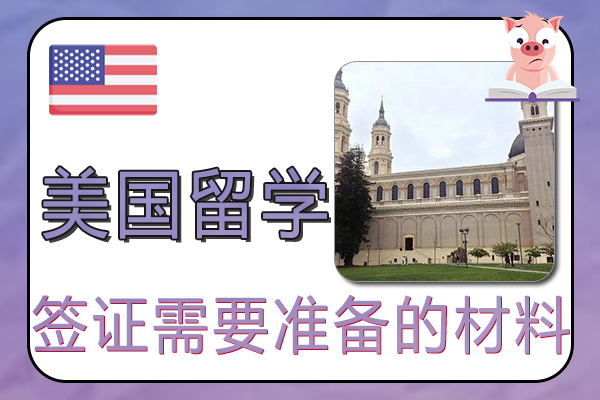Applying for a student visa is a very important step in studying in the United States.Documents required for a US study visa:Apply for a US study visa, ,US Study Visa Services, ,Study visa to the United States, ,How to apply for a US study visa, ,US study visa validity periodThe problem.

Documents required for a US study visa
1. Documents required for a US study visa
1. Documents Required for a U.S. Study Visa
- 1. Passport: The passport must be valid for at least six months beyond the planned period of stay in the United States and have at least two blank pages.
- 2. Photos: 2 color photos with white background, 5.1cm*5.1cm, taken within the last 6 months.
- 3. ID card: original valid ID card.
- 4. Household registration booklet: The original household registration booklet. If it is a collective household registration, just provide the first page and personal page.
- 5. Medical birth certificate: original medical birth certificate.
- 6. Admission letter: the admission email and scholarship information email sent by the school.
- 7. I-20 Form: The original I-20 Form is issued by the American school. Sign and date on the horizontal line of the original I-20 Form. Parents of students under the age of 18 also need to sign.
- 8. School certificate:
- 9. Transcript: School transcript.
- 10. Study Plan in the United States: Postgraduate applicants and applicants with work experience are recommended to provide this document.
2. Documents Required for US Study Visa Interview
1. Income certificate from parents’ work unit: please print it on the official letterhead of the work unit, sign and stamp it with the company’s official seal, and specify the date and the following information: name, position, monthly salary and years of work experience. If you are operating a company or investing in shares, provide the original business license (a copy is acceptable).
2. Proof of funds: Parents’ bank statements for the past six months. It is recommended to use a deposit certificate (a deposit certificate of more than 300,000 yuan) in conjunction with the deposit certificate.
3. Auxiliary assets: original vehicle driving license and original property ownership certificate.
2. Introduction to U.S. study visa types
Type 1: F visa
This type of U.S. student visa is for international students who intend to pursue an academic degree at an accredited U.S. college or university, or to study English at a university or institution that provides English language enhancement. There are three types of F visas:
▪F-1 visa is for full-time students
▪The F-2 visa is for the dependents (spouse and unmarried children under the age of 21) of an F-1 visa holder, including spouses of the same sex.
▪The F-3 visa is for "border commuters" - students who live in Mexico and Canada in their country of origin, but attend school in the United States part-time or full-time.
Students with an F-1 visa may work on campus for 20 hours or less per week. Students who wish to work longer hours and work off-campus must obtain prior approval from the United States Citizenship and Immigration Services (USCIS) - they may also be authorized to work for Curricular Practical Training (CPT) and Optional Practical Training (OPT) for a full 12-month period, excluding the 90 days of unemployment.
Type 2: M visa
This type of US student visa is for international students who want to participate in non-academic, vocational studies or obtain training at an institution in the United States. There are three types of M visas:
▪M-1 visa is for students who are going to study vocational or non-academic courses
▪M-2 visa is for family members of M-1 visa holders (same as F-2 visa)
▪The M-3 visa is for "border commuters" and, like the F-3 visa, is for vocational or non-academic study.
Students on an M-1 visa are admitted to the U.S. for a fixed period of time - the length of their training program plus any optional practical training. They cannot stay in the U.S. for more than one year, except for medical extensions. M-1 visa holders are not allowed to work on or off campus during their studies, and cannot change status to an F-1 visa.
The third type: J visa
This last type of US student visa is for international exchange visitors who are participating in a US program to promote cultural exchange. Regardless of whether they are receiving medical, business, or other training, all applicants must meet the eligibility criteria for the program in question and be sponsored by a private sector or government program. J visa holders usually stay in the US for only a short period of time, perhaps 1 or 2 semesters. There are two types of J visas:
▪J-1 visa is for exchange students in related exchange programs
▪J-2 visa is for family members of J-1 visa holders (same as F-2 visa)
J-1 visa holders who are part of a government-sponsored exchange program will be subject to a two-year return-to-country residency requirement to pursue graduate medical education, training, or training that is included on the exchange visitor skills list (i.e., the J-1 visa holder's country of origin deems their expertise or skills necessary for the country's development). These requirements mean that J-1 visa holders will need to return to their country of origin at least two years after completing their exchange visitor program.
3. Misconceptions that international students should know when applying to the United States
1. The probability of applying to early schools is high
As more and more students apply to study in the United States, admission has become more difficult. In addition to improving their own abilities, some people have other ideas, such as applying as early as possible, or applying to as many schools as possible, casting a wide net and closing the net early.
In fact, the school's admission is mainly based on the students' abilities. Only if they meet the admission requirements will an offer be issued. In fact, it has no direct relationship with when you submit your application or the number of schools you apply to. On the contrary, having too many goals will affect everyone's concentration.
2. Liberal arts schools are not as good as comprehensive universities
In the perception of domestic students, universities are institutions of a higher level than schools, and their academic qualifications are more recognized. In the United States, the reputation and publicity of universities are indeed higher than those of colleges, but that does not mean they are worse.
Their main difference is in scale. The scale of the college is much smaller, with the total number of students generally ranging from 1,000 to 3,000. The class size is controlled at around 10 people. The interaction between teachers and students is stronger, and students actually have more opportunities to come into contact with professors and scientific research results.
3. More activity experience is beneficial for application
American colleges and universities have relatively high requirements for students' software, among which extracurricular activities and competition experience are very good materials. However, when you present them, you should consider the content related to the application goals, and don't just ask for more.
It doesn't mean that the more activity experiences you prepare, the greater the possibility of your application being approved. It must be closely connected with your goal and you must have achieved success in the activities. Only then will it be beneficial to your application. Useless materials will only delay your application.
4. You must choose a famous person when writing a recommendation letter
Among the materials that need to be presented, recommendation letters are very important. The requirements for the documents are, on the one hand, to show other people's evaluation of the applicant, and on the other hand, the recommender needs to have a certain social status and have a relatively close relationship with the applicant.
The social status of the recommender will indeed affect the result of the review, but we must distinguish between the primary and the secondary. Whether the recommender is a celebrity should be placed after the closeness of the relationship, because only real documents will bring help to everyone.
Summary of materials needed for a US study visa
After understanding the materials needed for a U.S. study visa, you will also need to prepare an online tool to bypass the firewall and return to China when studying in the United States.For many Chinese who go to the US to study and work, they still like to watch some Chinese TV series and programs in China, and they are more accustomed to use some domestic native apps to listen to music, watch videos, play games and so on. However, due to copyright reasons, most of the popular programs are only allowed to be accessed by mainland IPs. In such a big background, theBack to China via the InternetQuickFox uses original edge node technology, intelligent server traffic diversion, on-demand acceleration, and automatically selects the best line for customers, which can effectively avoid the problem of most users being concentrated on some lines.














